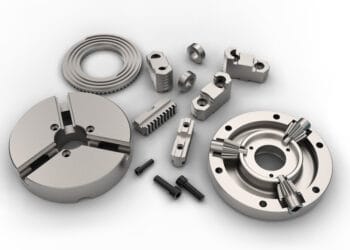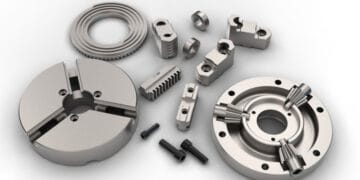Nowadays, manufacturing companies depend on CNC machining to produce custom-machined parts with precision and accuracy. The professionals who operate CNC machines are CNC machinists, who are trained in using them, set up and working optimally.
Before CNC technology was used, manufacturing companies relied on traditional machining which required one technician per machine. Traditional machining may get used less often but it’s invaluable in certain scenarios. Let’s begin and see which of the machining process is better.
Difference Between CNC Machining and Traditional Machining
One key difference between CNC machining and traditional machining is in their staff requirements during the stage of processing. For example, a professional CNC machinist does operate many tools at the same time under CNC machining but in traditional machining one machinist should be assigned for every process.
It is ideal to know the main differences between these two manufacturing processes. It helps us understand how they can be used in business and manufacturing scenarios.
What is CNC Machining?
CNC machining is a manufacturing process where automated systems control the cutting tools to remove material from workpieces. Since it was introduced in the 20th century, it has proven amazing and scalable from prototyping to mass production. And CNC machining has gained popularity in today’s time.
What is Traditional Machining?
The traditional machining method relies on workers as they need to move the cutting tool and take material off the workpiece. The cutting tool in this method can be easy or complex, but the machinist does the relative movement.
Pros and Cons of CNC and Manual Machining
Advantages of CNC Machining
- Since no operators are regulating the cutting tool, there is no chance of human error.
- With CNC machines, you can take consistency to a higher level, and all the machined parts look identical. This is necessary in bulk production.
- There is an exact direction of the cutting tool in as few increments as desired, and the process is precise.
- Once programmed, CNC machines can easily operate with minimal human intervention, which maximizes productivity.
Disadvantages of CNC Machining
- There is an extra stage of computer programming, which requires a skilled programmer to create codes for the components.
- CNC equipment demands high initial investment since the machines are expensive.
Advantages of Traditional Machining
- Traditional machining has a lower investment cost.
- There is no need for programming to machine the segments. A professional CNC machinist can operate the part directly.
- In case of malfunction, machines such as manual grinding are easier and quicker to fix and the repairing cost is low.
Disadvantages of Traditional Machining
- The manufacturing speed of this speed is quite slow. CNC machining can be performed quickly, whereas traditional machining can take hours.
- Traditional machining cannot handle large-scale production requirements and numbers.
- Traditional machining can lead to human errors.
The True Cost Difference between CNC and Traditional Machining
The true cost difference between CNC machining and traditional machining is significant. It’s necessary to consider this when making informed decisions. Here is a comparison table:
| Cost Factors | CNC Machining | Manual Machining |
|---|---|---|
| Equipment | High initial investment | Lower initial investment |
| Material Waste | Minimal waste | Moderate waste |
| Maintenance | Regular maintenance costs | Lower maintenance costs |
| Flexibility | Limited flexibility | Higher flexibility |
| Programming | Software and training costs | N/A |
| Labor | Lower labor costs | Higher labor costs |
Why CNC Machining Services is Better than Traditional Machining
CNC machining services are often better than traditional machining because they offer greater precision, efficiency, and consistency. With CNC, complex parts can be produced with high accuracy and repeatability, thanks to computer control. This reduces errors and waste, saving both time and money, especially for large or complex projects. Additionally, CNC machines can run continuously with minimal supervision, allowing for faster production times and lower labor costs compared to the more hands-on, skill-intensive nature of traditional machining.





































Discussion about this post